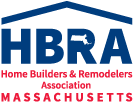Three years of advocacy by Governor Baker, Lt. Gov. Polito, Housing and Economic Secretary Kennealy, and lobbying by the HBRAMA, came to fruition on January 14 when the governor signed House Bill No. 5250, An Act enabling partnerships for growth into law. That bill included provisions dubbed “Housing Choices” that is the most important housing legislation since the enactment of Chapter 40B in 1969.
The new law, which became effective upon the governor’s signature, makes historic changes to the state’s Zoning Act (G.L. c. 40A), as well as to the Smart Growth Zoning and Housing Production Act (G.L. c. 40R) and the Smart Growth Zoning School Reimbursement Act (G.L. c. 40S).
The historic feature of the law is the amendment to the Zoning Act that lowers the voting threshold from 2/3rds to a mere majority for the adoption of municipal zoning ordinances and bylaws that facilitate housing production. The following zoning ordinances and bylaws now only require a majority vote of a city council or town meeting:
- an amendment to a zoning ordinance or by-law to allow any of the following as of right: (a) multifamily housing or mixed-use development in an eligible location; (b) accessory dwelling units, whether within the principal dwelling or a detached structure on the same lot; or (c) open-space residential development;
- an amendment to a zoning ordinance or by-law to allow by special permit: (a) multi-family housing or mixed-use development in an eligible location; (b) an increase in the permissible density of population or intensity of a particular use in a proposed multi-family or mixed use development pursuant to section 9; (c) accessory dwelling units in a detached structure on the same lot; or (d) a diminution in the amount of parking required for residential or mixed-use development pursuant to section 9;
- zoning ordinances or by-laws or amendments thereto that: (a) provide for TDR zoning or natural resource protection zoning in instances where the adoption of such zoning promotes concentration of development in areas that the municipality deems most appropriate for such development, but will not result in a diminution in the maximum number of housing units that could be developed within the municipality; or (b) modify regulations concerning the bulk and height of structures, yard sizes, lot area, setbacks, open space, parking and building coverage requirements to allow for additional housing units beyond what would otherwise be permitted under the existing zoning ordinance or by-law; and
- the adoption of a smart growth zoning district or starter home zoning district in accordance with section 3 of chapter 40R.
The law also lowers the threshold for the approval of special permits from 2/3rds to a mere majority for the following:
- Multifamily housing that is located within 1/2 mile of a commuter rail station, subway station, ferry terminal or bus station; provided, that not less than 10 per cent of the housing shall be affordable to and occupied by households whose annual income is less than 80 per cent of the area wide median income as determined by the US Department of Housing and Urban Development and affordability is assured for a period of not less than 30 years through the use of an affordable housing restriction;
- Mixed-use development in centers of commercial activity within a municipality, including town and city centers, other commercial districts in cities and towns and rural village districts; provided, that not less than 10 per cent of the housing shall be affordable to and occupied by households whose annual income is less than 80 per cent of the area wide median income as determined by the US Department of Housing and Urban Development and affordability is assured for a period of not less than 30 years through the use of an affordable housing restriction; or
- A reduced parking space to residential unit ratio requirement, pursuant to this section; provided, that a reduction in the parking requirement will result in the production of additional housing units.
A notable feature of the new law is its mandate that a community served by the MBTA have a zoning ordinance or by-law that provides for at least 1 district of reasonable size in which multi-family housing is permitted as of right; provided that such multi-family housing be without age restrictions, be suitable for families with children, have a minimum gross density of 15 units per acre, and be located not more than 0.5 miles from a commuter rail station, subway station, ferry terminal or bus station.
In an effort to curb frivolous abutter appeals, the law allows a judge of the Land Court or Superior Court to require a plaintiff in an action appealing a decision to approve a special permit, variance or site plan to post a surety or cash bond in an amount of not more than $50,000 to secure the payment of costs if the court finds that the harm to the defendant or to the public interest resulting from delays caused by the appeal outweighs the financial burden of the surety or cash bond on the plaintiffs.
Finally, what was struck from the law was also of interest to the housing industry. Gov. Baker vetoed language in the bill that would have allowed the sealing of any eviction where a judgment had been rendered, even in a case where a tenant was evicted for criminal activity or endangering other tenants. The governor also vetoed a provision that would have created a municipal local-option law to grant tenant associations a right-of-first-refusal to purchase from a landlord.
The HBRAMA thanks Governor Baker for his unyielding commitment to expanding housing opportunities for all the citizens of the Commonwealth.
A summary of the key provisions of the new law can be found here.

